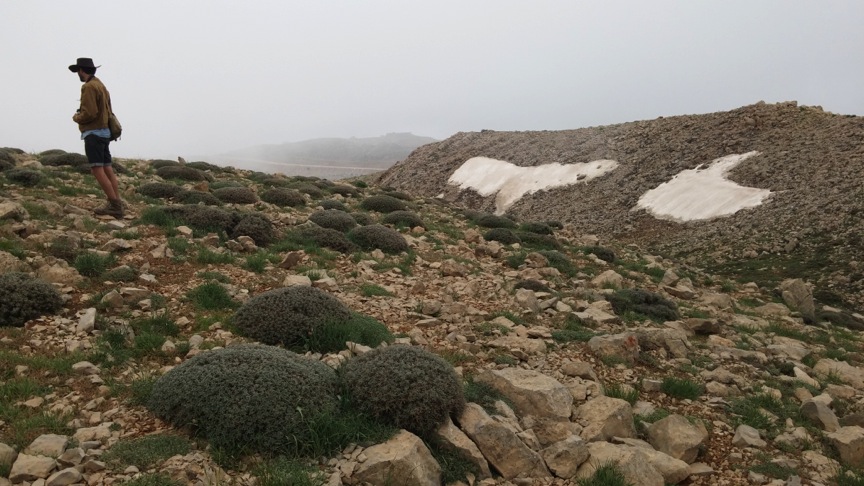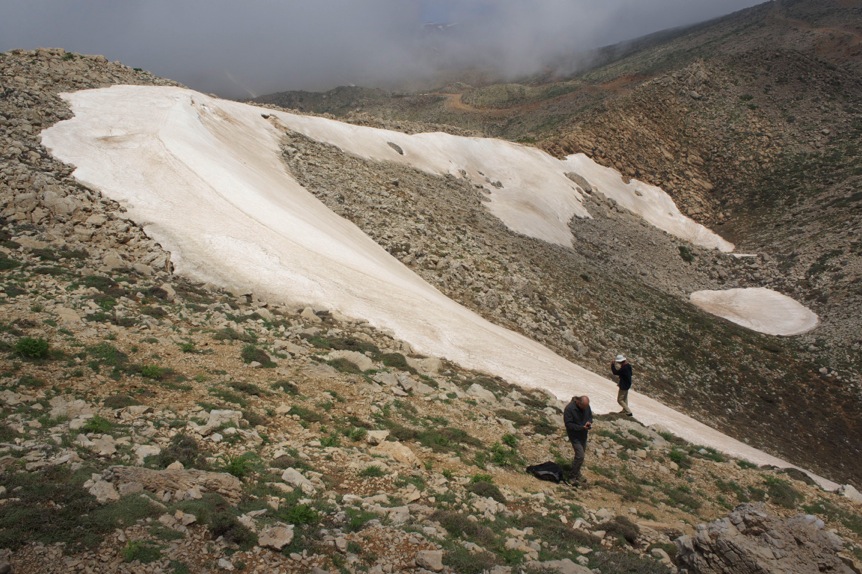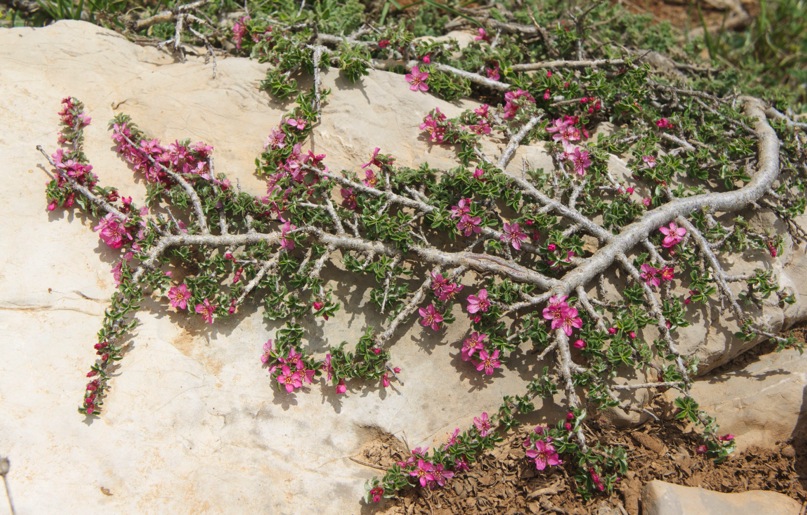A journey north; Part 1 – through the Hula Valley to Mount Hermon
- friendsjbg
- Jan 7, 2016
- 4 min read
Updated: May 27
In May 2015, through the generosity of Mrs D Worms and her late husband, the Friends of Jerusalem Botanical Gardens were able to award a four-week internship to Jack C, a final-year Kew Diploma student. Due to an administrative error, his blog wasn’t published at the time, so here is the first section now.
As we left the bustling streets of Jerusalem at the crack of dawn, I was still half asleep. Having not entirely adjusted to the time difference between a now somewhat distant British Isles and my new abode for the month ahead, I drifted back in my mind to the night before. I had been strolling through the city to try and get my bearings, but got more and more lost each time I followed my nose on the trail of sweetly-scented citrus and Pittosporum tobira. Like many of Jerusalem’s multicultural inhabitants, these plants had come from distant shores. Yet over the next two days under the guidance of JBG Scientific Director, Dr Ori Fragman-Sapir, I managed to take a glimpse of the incredibly varied and beautiful flora that has populated this climatically diverse region since long before any human being.
I travelled north to Rosh Pinah that morning with fellow UK interns Hans M and James M, where we met Ori and Jill K, a trustee of the British Friends of JBG. Over much needed coffee and substantial Jaffa bagels, Ori talked us through the plan for the day; to ascend the area of Mt. Hermon that lies within Israeli territory – home to a myriad of wildflowers, shrubs, and trees that knew only boundaries of climate.
On the way we drove through the Hula Valley, surrounded by the steep slopes of the Golan Heights to the east and Upper Galilee’s Naftali mountains to the west. The Hula Valley was once extensive marshland surrounding Lake Hula but was drained in the 1950s to create naturally irrigated and fertile agricultural land, and rid the region of mosquitoes carrying malaria. The success of this reclamation project can be seen today, with field after field of crops such as cotton, wheat and apples, all contributing to Israel’s ability to produce 95% of its own food requirements.

Mt Hermon – May 2015 Photo: Jack Clutterbuck
However, the environmental consequences of reclaiming the land were high as this rare wetland ecosystem and stop off point for migrating birds was lost. A chance flooding event in the 1990s allowed a small part of the valley to be flooded once more, and the decision was made to develop it as a stop-off for migrating birds. This nature park, known as Agamon HaHula, attracts around 500 million migrating birds in autumn and spring. As we sped along through the valley, a mustering of storks could be seen above us following the Jordan River northwards to Europe and western Asia.
On the approach to Mt. Hermon, now past the endless agricultural fields, we found ourselves amongst Mediterranean climate vegetation. Savannah-like plains and open scrubland stretched outwards and upwards, characterised by two species of spiny jujube; Ziziphus spina-christi, with its edible burnt-yellow fruits tasting like raisins, and Ziziphus lotus, defined by a more sprawling habit.
Increasing in altitude, a Mediterranean oak scrub dominated the rocky hillsides, until we reached around 1300m. From then on a transition took place into Irano-Turanian and Mediterranean mountain vegetation, with deciduous trees and shrubs such as Styrax officinalis, and a familiar friend at what must be its most southern distribution; Sorbus torminalis. As we drove further up the mountain and the temperature gradually decreased, I had a sense of travelling back in time. The half-parched landscape began to turn green and lush once again, and specks of pink, yellow, white, and purple flowers flashed amongst the shimmering grasses.
The summit of Mt. Hermon reaches up along the border between Syria and Jordan. Around 7% of the mountain range lies within Israel, and to reach the highest areas we had to pass through many armed security gates. Ori had been granted a permit that allowed us to travel through them, enabling us to explore parts of the mountain that most people never get the chance to see. As we moved up into the clouds and amongst sub-alpine vegetation, patches of the snow still clung to the slopes. “Let’s look near to the snow” suggested Ori. He explained that the soft chalky soil here acts like a sponge, and so some of the best places to find plants in flower are within close proximity to the snowmelt.

Examining plants near the snowline on Mt Hermon, May 2015
Growing at just over 2100m upon sharp slopes and amid angular boulders was an abundance of miniature spring flowering delights. The dominant climax species were the low growing sub-shrubs Astragalus cruentiflorus and Astragalus gummifer, forming a patchwork of ‘hedgehog-like’ forms across the landscape. These species also acted as nursery plants for many herbaceous species, providing a microclimate for their establishment in a hostile environment. The faded pink flowers of Tulipa humilis were just awakening for the afternoon sun, and the golden Ranunculus cuneatus appeared jewel-like amongst the stony ground. The most conspicuous plant had to be Prunus prostrata (creeping cherry), sprawling over and hugging the limestone rocks that formed a backdrop for a profuse display of flushed pink flowers.

Prunus prostrate on Mt Hermon, May 2015 (c) Jack Clutterbuck
As I took in the magnificent views of the Golan Heights and up to the snow capped peak of Mt. Hermon, I became aware of the tranquil silence that can only be found at such altitudes. I was a long way from my home in London.
To be continued ….



Comments